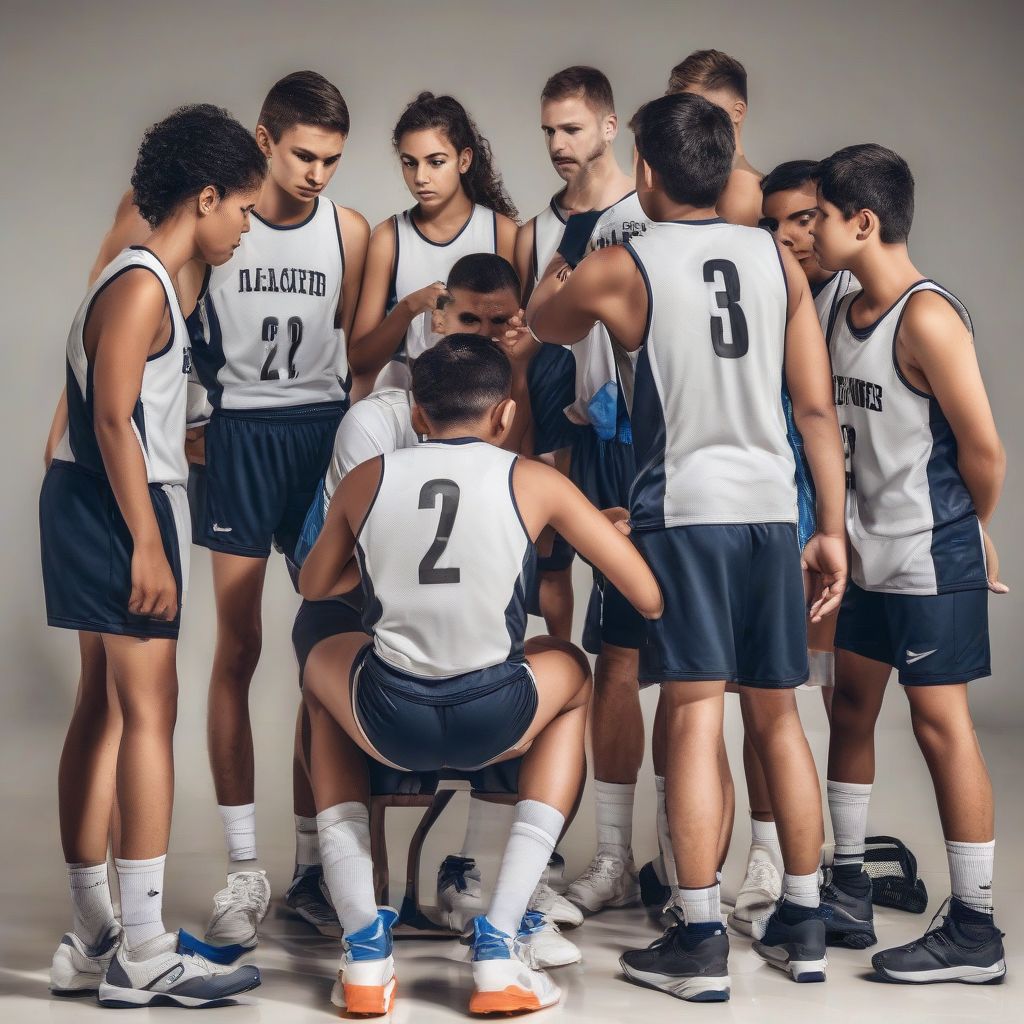Imagine a basketball team brimming with talent, yet consistently falling short. They have the skills, the drive, but something’s missing. Often, that missing piece is effective leadership. Leadership in sports isn’t just about barking orders; it’s about fostering a winning mentality, inspiring peak performance, and uniting individuals into a cohesive force. The impact of leadership on team performance in sports is profound and multifaceted, influencing everything from player motivation and communication to overall team success.
What Makes a Great Sports Leader?
Effective sports leadership isn’t a one-size-fits-all concept. Different teams, sports, and situations call for different leadership styles. However, some key traits consistently emerge as crucial for success:
Communication and Vision
A great leader clearly communicates the team’s goals and vision, ensuring everyone is on the same page and working towards a shared objective. This involves not just outlining the “what” but also the “why,” inspiring players to buy into the team’s mission.
Motivation and Inspiration
Leaders must be able to motivate and inspire their teams, even in the face of adversity. This involves understanding individual player motivations and tailoring their approach accordingly. A good leader knows when to push and when to offer support, creating an environment where players feel valued and empowered.
Trust and Respect
Building a strong foundation of trust and respect is essential for effective leadership. Players need to believe in their leader’s competence and integrity. This fosters a positive team dynamic, where players are willing to put the team’s needs above their own.
Decision-Making and Strategy
Leaders must be able to make sound decisions under pressure, developing effective strategies and adapting to changing circumstances. This involves analyzing the strengths and weaknesses of their own team, as well as those of their opponents, and making strategic adjustments accordingly.
The Correlation Between Leadership and Team Success
Numerous studies have demonstrated a strong correlation between effective leadership and team success in sports. Teams with strong leaders tend to exhibit higher levels of cohesion, motivation, and performance. They are more resilient in the face of setbacks and better equipped to handle pressure situations. This translates to improved win-loss records, championship titles, and overall team achievement. For example, a study published in the Journal of Applied Sport Psychology found that leadership behaviors, particularly transformational leadership, significantly predicted team cohesion and performance.
Different Leadership Styles in Sports
Just as there are different playing styles, there are also various leadership styles in sports. Some common styles include:
Autocratic Leadership
This style involves centralized decision-making, with the leader holding ultimate authority. While effective in certain situations, it can stifle player creativity and autonomy.
Democratic Leadership
This approach encourages player input and shared decision-making. It fosters a sense of ownership and can boost team morale, but it can also be time-consuming and less decisive in critical moments.
Transformational Leadership
This style focuses on inspiring and motivating players to reach their full potential. Transformational leaders create a shared vision, foster a positive team culture, and empower players to take ownership of their performance. This style is often associated with the highest levels of team success. Think of coaches like Phil Jackson or Gregg Popovich, known for their ability to inspire and connect with their players on a deeper level. “The strength of the team is each individual member. The strength of each member is the team,” Phil Jackson once said, highlighting the importance of unity and collective effort.
Laissez-Faire Leadership
This hands-off approach provides minimal guidance and allows players significant autonomy. While it can be effective with highly experienced and self-motivated teams, it can also lead to a lack of direction and structure.
Practical Strategies for Enhancing Leadership in Sports
Developing effective leadership skills requires ongoing effort and self-reflection. Here are some practical strategies:
- Lead by example: Demonstrate the qualities you expect from your team members. Show dedication, hard work, and a positive attitude.
- Communicate effectively: Clearly articulate your vision, expectations, and feedback. Be open to listening to your players’ perspectives.
- Build relationships: Foster a strong rapport with your team members, showing genuine care and concern for their well-being.
- Empower your players: Delegate responsibilities and provide opportunities for them to take ownership of their performance.
- Continuously learn and adapt: Seek feedback from your players, coaches, and mentors. Be willing to adjust your leadership style based on the specific needs of your team and the situation.
 The Impact of Leadership on Team Performance in Sports
The Impact of Leadership on Team Performance in Sports
The Role of Coaching Strategies
Coaching strategies play a pivotal role in fostering effective leadership and enhancing team performance. A well-designed coaching strategy incorporates principles of leadership, communication, and motivation to optimize player development and team success. You can learn more about the impact of coaching strategies on game outcomes by clicking here: https://sportsfanaticzone.net/the-impact-of-coaching-strategies-on-game-outcomes/
Analyzing Player Performance
Understanding individual player performance is crucial for effective leadership. By analyzing player strengths and weaknesses, leaders can tailor their coaching approach and maximize the team’s overall potential. For a deeper dive into player performance analysis, check out this resource: https://sportsfanaticzone.net/how-to-analyze-player-performance-in-high-stakes-matches/
Momentum Shifts in Sports
Leadership plays a vital role in navigating momentum shifts during games. A strong leader can help their team maintain composure during challenging moments and capitalize on opportunities. To explore the dynamics of momentum shifts, visit this article: https://sportsfanaticzone.net/the-role-of-momentum-shifts-in-game-changing-moments/
Conclusion
The impact of leadership on team performance in sports is undeniable. Effective leaders inspire, motivate, and unite their teams, creating a winning culture and driving success both on and off the field. By developing key leadership qualities, embracing appropriate leadership styles, and implementing practical strategies, coaches and team captains can unlock the full potential of their teams and achieve extraordinary results. What are your thoughts on leadership in sports? Share your experiences and insights in the comments below!



